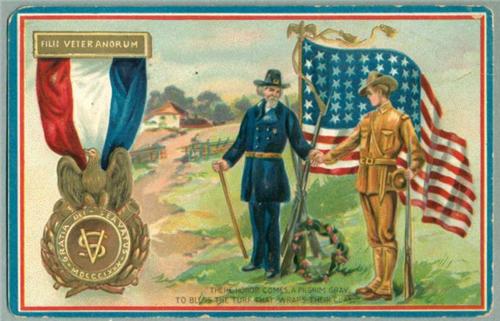There is often confusion around what Memorial Day is for and as much as I like to gather with my family for a cook out in the back yard, the primary purpose is to memorialize those who have given the ultimate sacrifice.
Prior to the Civil War, people would gather in cemeteries to decorate the graves of the war dead. This became known as Decoration Day and would include a picnic right there in the cemetery. First they paid their respects to the dead, and then they had the cook out.
Memorial Day is also NOT Veterans Day and although I believe we should thank our veterans every day of the year, Memorial Day is not for the living but for the dead. Take time on this Memorial Day to pay a visit to your local cemetery, maybe you can locate the grave of a veteran that no one is caring for, and place some flowers, say a short prayer, and thank them for their service. It is the least we can do!
In 1868 the Command in Chief of the Grand Army of the Republic released General Order 11 setting out the reasons why we celebrate, then the 30th day of May, as the day to recall those who have gone before us.
General Order
No. 11Headquarters, Grand Army of the Republic
Washington, D.C., May 5, 1868I. The 30th day of May, 1868, is designated for the purpose of strewing with flowers or otherwise decorating the graves of comrades who died in defense of their country during the late rebellion, and whose bodies now lie in almost every city, village, and hamlet churchyard in the land. In this observance no form or ceremony is prescribed, but posts and comrades will in their own way arrange such fitting services and testimonials of respect as circumstances may permit.
We are organized, comrades, as our regulations tell us, for the purpose, among other things, “of preserving and strengthening those kind and fraternal feelings which have bound together the soldiers, sailors, and marines who united to suppress the late rebellion.” What can aid more to assure this result than by cherishing tenderly the memory of our heroic dead, who made their breasts a barricade between our country and its foes? Their soldier lives were the reveille of freedom to a race in chains, and their death a tattoo of rebellious tyranny in arms. We should guard their graves with sacred vigilance. All that the consecrated wealth and taste of the Nation can add to their adornment and security is but a fitting tribute to the memory of her slain defenders. Let no wanton foot tread rudely on such hallowed grounds. Let pleasant paths invite the coming and going of reverent visitors and fond mourners. Let no vandalism of avarice or neglect, no ravages of time, testify to the present or to the coming generations that we have forgotten, as a people, the cost of free and undivided republic.
If other eyes grow dull and other hands slack, and other hearts cold in the solemn trust, ours shall keep it well as long as the light and warmth of life remain in us.
Let us, then, at the time appointed, gather around their sacred remains and garland the passionless mounds above them with choicest flowers of springtime; let us raise above them the dear old flag they saved from dishonor; let us in this solemn presence renew our pledges to aid and assist those whom they have left among us as sacred charges upon the Nation’s gratitude,–the soldier’s and sailor’s widow and orphan.
II. It is the purpose of the Commander-in-Chief to inaugurate this observance with the hope it will be kept up from year to year, while a survivor of the war remains to honor the memory of his departed comrades. He earnestly desires the public press to call attention to this Order, and lend its friendly aid in bringing it to the notice of comrades in all parts of the country in time for simultaneous compliance therewith.
III. Department commanders will use every effort to make this order effective.
By command of:
JOHN A. LOGAN,
Commander-in-Chief.N. P. CHIPMAN,
Adjutant-General.

